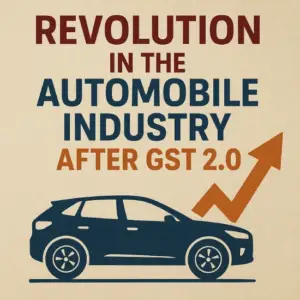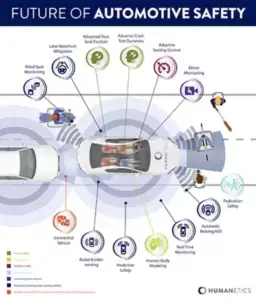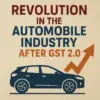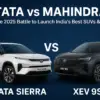Introduction
In India’s automotive market, the appeal of SUVs has moved far beyond a temporary trend—by 2025, compact and mid-size SUVs are firmly entrenched as the dominant vehicle choice for millions of buyers. While hatchbacks and sedans still hold value, it’s the SUV body-type that continues to capture the largest share of consumer interest, showroom space, and marketing focus.
This article explores why SUVs are still dominating, examines the latest data, highlights key models leading the segments, uncovers the buyer motivations, and discusses what this means for the coming years.
The SUV Boom: What’s Driving It
Multiple factors explain the persistent popularity of compact and mid-size SUVs in India:
- Higher seating position and perceived safety — The elevated ride height gives a sense of command and control which appeals to Indian buyers.
- Versatility for urban + weekend use — Compact SUVs fit city driving while also offering space and comfort for family and longer trips. Mid-size SUVs raise the bar further.
- Feature rich offerings — Manufacturers pack these vehicles with tech, comfort, and safety features (sunroofs, large infotainment, ADAS, strong build) which were earlier limited to premium segments.
- Global design language and fresh styling — Buyers like the SUV aesthetic: muscular cladding, bold lines, larger wheels, premium finishes.
- Resale & brand value — Many compact and mid-size SUVs from trusted brands hold stronger resale, giving buyers added confidence.
- Model refreshes & launches — Automakers keep investing in these segments, meaning newer engines, EV/Hybrid variants, better spec, which keeps buyers interested.
Sales & Market Trend Snapshot
In 2025, compact and mid-size SUVs continue to lead monthly sales charts. For instance, compact models recorded sales volumes crossing the 1-lakh units annual mark, and mid-size SUVs maintained growth despite high competition. These segments show sustained growth even as other body types flatten.
The dominance of SUV body-types is visible in registration and dispatch data: buyers across cities — from metros to Tier-3 towns — are choosing SUVs in increasing numbers. Automakers respond by prioritising SUV launches, facelifts and special editions.
What Defines Compact vs Mid-Size SUV
- Compact SUVs: Typically sub-4-metre length or slightly above, engine capacities ~1.0-1.5 litre, 5-seater layout, price range roughly ₹8-15 lakh (ex-showroom) depending on fuel/transmission.
- Mid-Size SUVs: Larger dimensions (wheelbase, length), 5-7 seats, engine options often 1.5-2.0 litre, more premium finishes, price point roughly ₹15-30+ lakh (ex-showroom) in India.
Understanding this helps buyers assess value, space, and features based on their needs and budget.
Leading Compact SUVs in 2025
Here are some of the compact SUV models that are continuing to set the benchmark in India:
Tata Nexon
With strong safety credentials, value-rich features and a broad engine/EV choice, the Nexon remains a leader in the compact SUV segment.
Tata Punch
An even more affordable SUV offering, the Punch provides SUV styling, high ground clearance, and strong value for money.
Hyundai Venue
With refined engines, advanced features and good premium feel, the Venue appeals to those wanting a compact SUV with added comfort.
Kia Sonet
Packed with features, stylish design and multiple powertrains, the Sonet consistently performs well in the sub-compact SUV bracket.
Mahindra XUV 3XO / XUV300
These models bring strong engines, capable dynamics and value pricing in the compact SUV space.
These compact SUVs cater to a wide buyer base — from first-time SUV buyers to smaller families seeking an upgrade.
Leading Mid-Size SUVs in 2025
The mid-size SUV segment is also thriving. Some key models:
Hyundai Creta
A consistent performer with strong features, appeal and brand value. It remains a benchmark in the mid-size compact SUV space.
Kia Seltos
Premium interiors, strong engines, cutting-edge design make the Seltos a popular choice among buyers seeking “SUV prestige”.
Tata Harrier
With bold design and a strong value proposition, the Harrier brings mid-size SUV attributes at competitive price points.
Mahindra XUV700
Feature-rich, performance oriented and capable, the XUV700 raises the bar for mid-size SUVs.
Volkswagen/Toyota offerings etc
These add to the segment diversity, catering to buyers seeking premium quality and brand heritage.
Price Range & Value Comparison
The appeal of SUVs also ties into the value proposition they offer:
- Compact SUV starting prices often under ₹10-12 lakh (after tax benefits/discounts) for base petrol/manual variants.
- Mid-size SUVs begin around ₹15-16 lakh and can go up to ₹30+ lakh for high variants.
- Many compact and mid-size SUVs now offer features previously found only in premium cars — large screens, connected tech, ADAS, strong safety ratings.
- Resale value is relatively favourable for popular SUVs, adding to long-term cost of ownership benefits.
Buyer Profiles & Motivations
Different buyers gravitate to compact vs mid-size SUVs based on need:
- First-time SUV buyers or urban families often prefer compact SUVs — lower cost of ownership, easier manoeuvrability, sufficient space.
- Growing families or buyers with a taste for premium feel will opt for mid-size — extra space, stronger engines, premium interiors.
- Feature-seekers (technology, connectivity, safety) favour both segments, depending on budget.
- Upgrade buyers moving from hatchbacks or smaller cars see a compact SUV as “first SUV”, while buyers upgrading from compact SUVs may move to mid-size.
Core Features & Trends to Expect
- Increasing adoption of hybrid and electric powertrains, especially in these segments.
- Wider availability of ADAS and connected-car features even in base/mid trims.
- Improved material quality, higher feature content, sunroofs, panoramic roofs, dual displays becoming common.
- Greater choice of body colours, customization packages and SUV styling elements (black cladding, roof rails, larger wheels).
- More focus on ride comfort and refinement — quieter cabins, better suspension, improved finish.
Challenges & Considerations
- Higher fuel/EV charging cost: Mid-size SUVs with bigger engines consume more fuel or demand more charging cost.
- Running cost and maintenance: Larger SUVs typically cost more in upkeep, tyres and servicing.
- Size and manoeuvrability: In dense city traffic and tight parking, smaller SUVs may be easier to handle.
- Waiting periods: Popular models may have long booking waiting times.
- Feature/price gap: With increased features, the price of compact SUVs has moved up—buyers must ensure value per rupee.
Future Outlook: What’s Next for SUV Dominance
- The SUV wave is far from over: With electrification and model refreshes, compact and mid-size SUVs will continue to dominate well into the next decade.
- Seating capacity trends: 6- and 7-seater compact SUV variants will grow, blurring lines between compact and mid-size.
- Hybrid and EV SUVs will bring new value – lower running costs, tax benefits and access to green zones will enhance appeal.
- Premiumisation: Even compact SUVs will offer premium features, and mid-size models will further push luxury-SUV attributes into mainstream.
- Shift towards crossover styling and global platforms will make India a strategic launch market for SUV models.
Conclusion
Compact and mid-size SUVs remain the most dominant segments in the Indian car market in 2025. For buyers, that means better choices, stronger resale, and more features for the money. Whether your budget is modest or you’re going premium, SUVs offer a compelling mix of space, style and performance.
If you are planning your next car purchase or upgrade, focusing on these segments gives you access to the largest range of value-rich options. Expect the trend to continue—and make sure you pick the right SUV based on your budget, usage and long-term goals.
For More updates on Latest SUVs visit carzovo.com




































